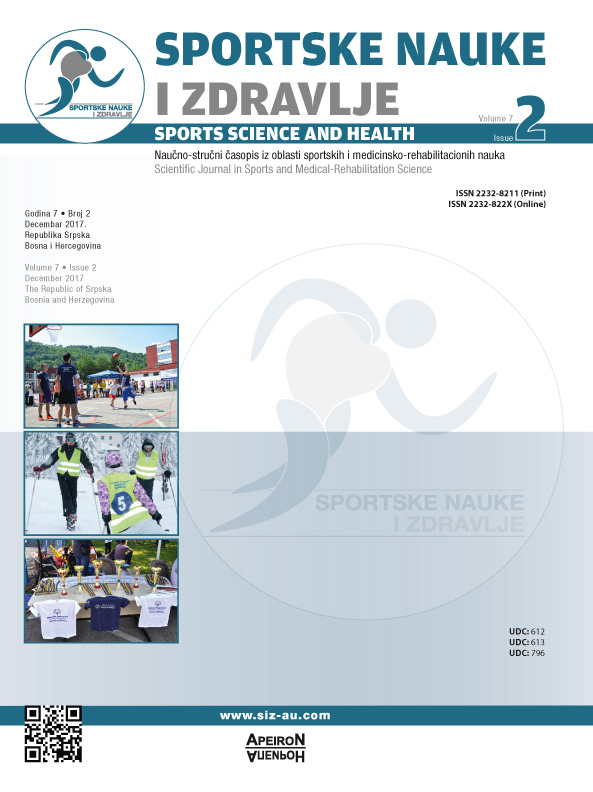Contemporary Principles of Magnetotherapy Application in Physical Medicine and Rehabilitation // Savremeni principi primjene magnetoterapije u fizikalnoj medicini i rehabilitaciji
DOI:
https://doi.org/10.7251/SSH1702087PAbstract
Magnetotherapy is one of the oldest methods of treatment and throughout the history of medicine it passed the path from alternative to official method. In the 21st century a large number of scientific researches broadened the indication areas based on magnetotherapy. The objective of the paper is to demonstrate: historical development, types of magnetotherapy, its biological effects, clinical application and mechanisms of effects. Available world reference from the fields of basic and clinical researches on magnetotherapy was used. Basic studies indicate that leucocytes, thrombocytes, osteoblasts, chondrocytes, fibrinogen, fibrin, cytokine, the factors of growth, collagen, elastin and free radicals show the alteration in its effects when exposed to magnetic field. Magnetic fields impact the proliferation of cells, epithelization, phagocytosis, vasodilation which certainly improves the physiological surrounding that contributes to the regeneration and healing. Therapeutic effects depend upon all characteristics of electromagnetic field and patient’s condition. The widest application of PEMP has in stimulation of osteogenesis (badly coalesced fractures, pseudarthrosis, spinal fusions coalescence), osteoarthritis, osteoporosis and other painful conditions. Transcranial magnetic stimulation has an increasing application in neuro-rehabilitation. Precise mechanisms of electromagnetic therapy effects are not known yet which is certainly one of the reasons of various approach and sufficient and on evidence based clinical application of this physical modality. A precise dosimetry, well-defined laboratory conditions, designed clinical studies, defined treatment protocols contribute to clearer clinical application as well as actuality of magnetotherapy in the future.Downloads
Published
2018-01-10
Issue
Section
Чланци
